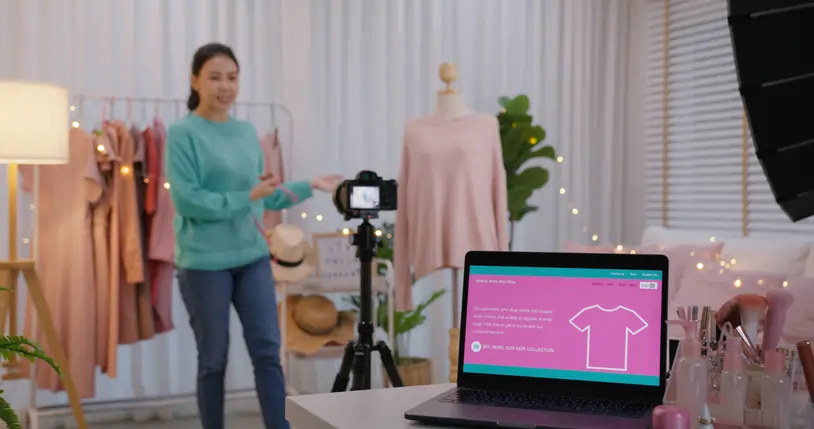
Embracing Social Commerce: The Future of Marketing

In the fast paced and hugely competitive world of brand marketing, Social Commerce has emerged as a powerful force reshaping the way brands engage with consumers. With the convergence of social media and e-commerce, it represents a massive shift in the way brands interact with their audience, driving unprecedented opportunities for engagement, conversion, and ultimately, growth.
What is Social Commerce?
Social Commerce is not merely about making a purchase based on an ad seen on social media (in fact there’s nothing social about that at all). It encompasses any purchase influenced by people on social media content, be it organic posts, influencer recommendations, or community interactions. It’s essentially word-of-mouth on steroids, tapping into the power of social influence and peer recommendations to drive purchasing decisions. It represents a real shift in power from retailers and brands to consumers and it is changing the way brands acquire and retain customers.
That’s because regardless of age, consumers want to see what other people are saying about a brand, not what a brand is saying about themselves before buying from them. We are increasingly looking for real content, created by real people who we can relate to and trust in order to make better and more informed buying decisions. That could be from family, friends, communities we are part of or authentic brand advocates we follow on social media.This is backed up by research from WP Engine which shows that 82 percent of Gen Z said they place more trust in a brand if their content features actual customers.
Social Commerce is a game changer because it serves these very needs, providing an enhanced shopping experience that is based on authenticity and trust, not on brand promotion.
So for brands that understand what Social Commerce is and how consumer buying behaviour has changed, the opportunity is huge. So huge in fact that, according to Accenture, social commerce sales are forecast to increase from $958 billion in 2022 to $3.37 trillion by 2028 and is set to grow three times faster than traditional ecommerce.
What does it mean for the future of brand marketing?
- The rise of the nano army
As consumers increasingly turn to creators for product recommendations and reviews, brands are recognising the importance of building meaningful partnerships with their nano influencers (aka their most influential customers). By adopting a creator-centric approach to content creation and collaboration, brands can unlock new levels of authenticity and reach, driving advocacy and loyalty among their audience.
Rather than obsessing over individual transactions, brands like Abercrombie & Fitch and ELEMIS are prioritising word-of-mouth growth through social media. By cultivating their own nano armies through advocacy reward programs and collaborating with them to amplify their brand story, these forward-thinking brands are driving true engagement and loyalty.
- User generated content over branded content
The fundamental reason Social Commerce is so big is because it is driven entirely by earned content from real people, not from content owned by a brand.
In fact, according to a recent survey from Sprout Social, people cited recommendations from friends as the top reason they make purchases through social media, while research from Stackla shows that user generated content (UGC) is 2.4 times more trusted than brand created content.
And so UGC serves as the social proof consumers are looking for and is the key to unlocking the potential of Social Commerce for brands today. And the best way for brands to invest in UGC is to first focus on building a community of loyal brand fans and then incentivising them to create and share content with their own followers.
Skin wellness brand, ELEMIS, is a great example of a brand doing this well. Its Skinsiders program engages its most socially active customers and incentivises them to create and share content on behalf of the brand in exchange for exclusive offers, content and products. Likewise, fashion retailer Mint Velvet, launched its MVCollective to do the same. Through the program, Mint Velvet has generated over 2000 pieces of UGC and counting, while increasing its social reach to over 7 million and saving thousands on paid production costs.
- Embracing TikTok as a Social Commerce powerhouse
In 2024, TikTok has solidified its position as a leading destination for social entertainment and shopping. With its vast user base and engaging content format, TikTok has become a driving force in the world of Social Commerce. Brands are leveraging TikTok’s unique features, such as Live Shopping and shoppable videos, to reach and engage with their target audience in innovative ways. The rise of #TikTokMadeMeBuyIt is a testament to the platform’s influence in driving purchasing decisions.
Laura Mallows, founder and CEO of Mallows Beauty, has almost exclusively grown her brand via TikTok. Since going live on TikTok Shop, she has seen over 10,000 pieces of UGC shared across the platform which has resulted in a 500 percent increase in sales. Many brands are following suit as the concept of the always open store experience of live shopping becomes more natural, with expert presenters acting like store associates live streamed into the home, as prospective customers pepper them, driving high revenue.
The future
By embracing the power of Social Commerce, businesses can create more meaningful connections with consumers, drive sales, and stay ahead of the curve in an increasingly competitive marketplace.
In essence, Social Commerce represents not just a trend or a tactic but a fundamental shift in the way brands approach marketing and engage with their audience – a shift that will define the future of commerce in the digital age.


